Morocco Tour
During this private tour, you will have the classic experiences of Morocco combined with a contemporary view of Moroccan culture sightings and discussions of street art. The number of touring days will depend on your special interests. You will discover the real Morocco, with fascinating varied experiences from north to south. High-quality Moroccan meals will be served throughout your journey. Our in-country guides and driver will be available to you throughout your tour and help you to experience and enjoy authentic Morocco both old and new. Have a special interest? We will work with you to make your wishes come true.
21 days
Casablanca
20 nights at hotels/Riads as specified in the itinerary
Breakfast daily
Hassan II mosque inside tour
3 bottled mineral water per person per day
A/C transportation depending on number of person
Local guides in Casablanca, Rabat, Marrakech and Essaouira
Monuments & historical sites entrance fees as per the program
All taxes
Personal purchases, drinks, lunch, tips, flights, travel insurance, Visa requirements, services not mentioned above.
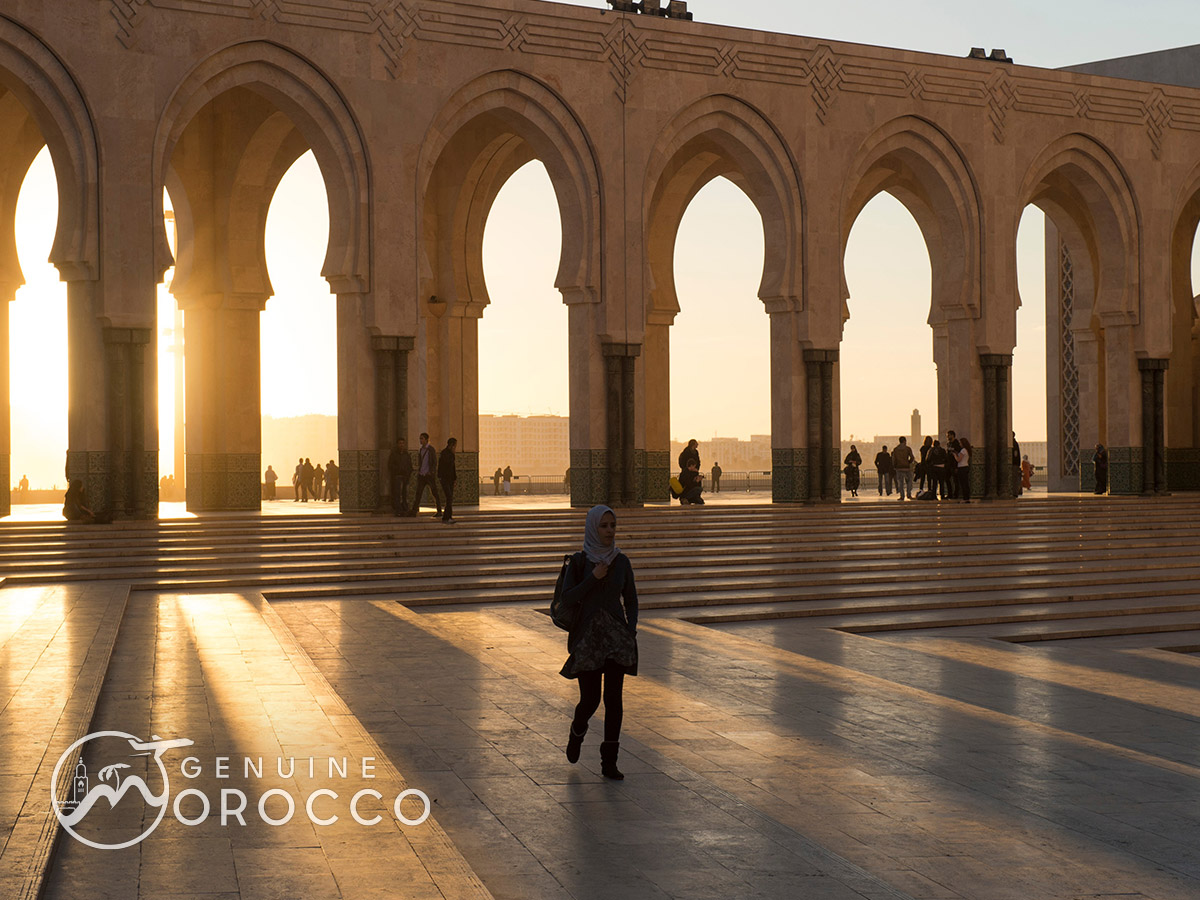
Day 1
Our representative will be awaiting your arrival at Casablanca International Airport. Please look for him outside the arrival’s hall. He will be holding a placard with your name on it. He will escort you to your private vehicle.
Casablanca, or ‘Casa’ as the locals call it is the largest and most populated city in Morocco; it is also the busiest port and its economic and industrial capital accounts for more than half of the country’s industrial output. The atmosphere is more cosmopolitan than in other parts of the country, with Western dress and fashions predominating. Start discovering Morocco’s largest city and economic capital,
Casablanca is the best representation of the modern nation. A brief highlight tour will include those at Pl Mohammed V, and new public buildings include the Grand Theater de Casablanca. The city’s handsome Moresque buildings, which meld French-colonial design and traditional Moroccan style, are seen best in the downtown area, the quartier habous and in the beachside suburb of Ain Diab, and the flamboyant building of Hassan II Mosque (interior). The Hassan II Mosque, sitting in a picturesque location on the sea. Inaugurated in 1993, its minaret is the tallest structure in Morocco and the tallest minaret in the world. While the exterior and surrounding area are impressive, what makes this mosque unique is that it is one of the few mosques in the country that non-Muslims can enter. Continue to your Rabat hotel via highway for overnight.

Day 2
After breakfast we will visit Rabat with guide. In the afternoon relax and wander on your own. Perhaps a visit to the art museum or history museum.

Day 3
After the breakfast we will start to explore Morocco’s political and administrative capital. A clean central beach, an intact and evocative Kasbah, and an attractive walled medina that is far less touristy than in other large Moroccan cities. Our tour starts from the Mohammed V and Hassan II Mausoleum, the landmark of Rabat, the Hassan Tower, and one of the oldest mosques in Morocco. The Kasbah of the oudayas, Rabat historic citadel occupies the site of the original Rabat (fortress-monastery) that gave the city its name. After the tour, drive to Tangier on the Atlantic and Mediterranean coasts. Overnight in Tangier.
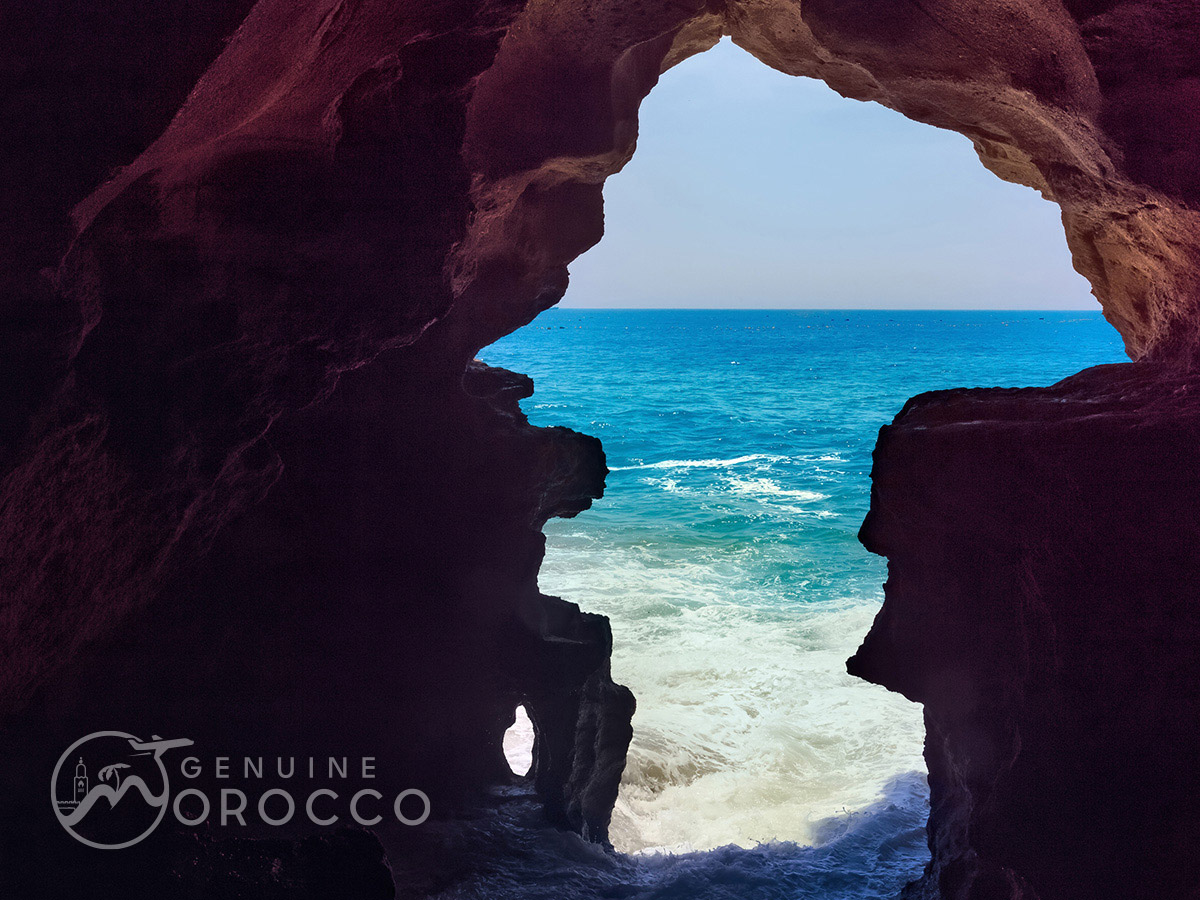
Day 4
After the pickup at your hotel in Tangier, we’ll take a ride through different neighborhoods and surrounding areas, including several stops at amazing viewpoints, a short break at Cape Spartel where the Atlantic Ocean meets the Mediterranean Sea, and a visit to the mythical Caves of Hercules.
The second portion of the tour consists of an extensive walk through the maze of narrow streets and alleyways of the Kasbah (fortress), for insight into a rich architectural heritage that includes a 15th-century city wall, and numerous buildings of Arab-Andalusian style, that have inspired great artists and painters among them Eugene Delacroix, Henri Matisse.
Then heading for the Medina (old town), which represents a major center of interest to get a taste of the local culture and lifestyle through the ambiance of its busy markets and streets, communal ovens, steam baths, and artisanal shops. and lively squares. It is also home to an important Jewish and Christian heritage. The tour also provides the opportunity to experience the genuine Moroccan cuisine and the vibrant atmosphere of the souks where craftsmen and merchants make/sell their traditional items. Perhaps check out the Café Hafa or the Cafe Baba, both hangouts of Paul Bowles and William Burroughs. Your driver and guide will take you back to your hotel.

Day 5
Today, after your breakfast in Tangier we will head to Chefchaouen via Tetouan, a small town near Tangier. In Tetouan we will have an hour to discover the old medina and take pictures of the most famous sights in the town. Then we continue the drive to Chefchaouen, there you will have the rest of the day at your riad inside the old medina with a beautiful view of the Riff mountains. Overnight at the riad.
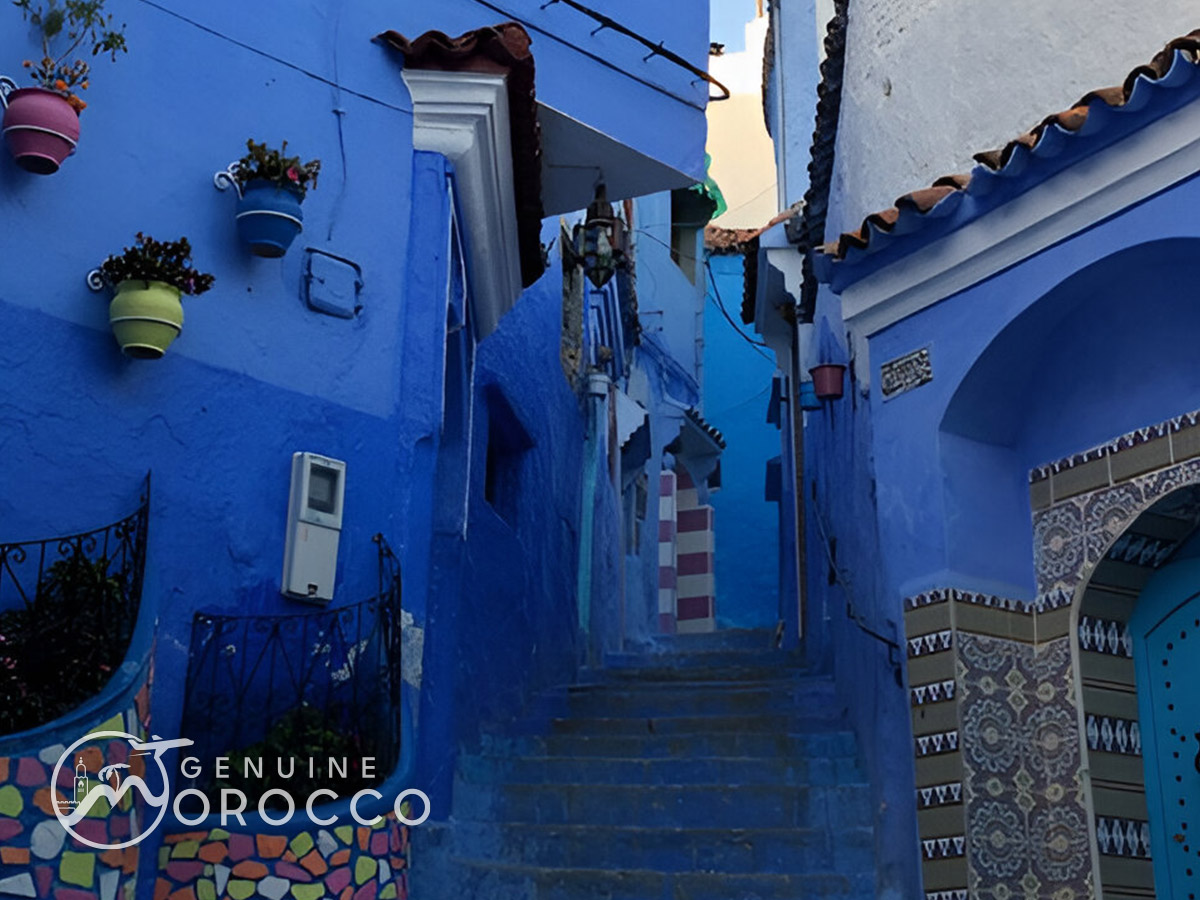
Day 6
Start this part of Morocco tour after breakfast in Chefchaouen with a local certified guide. You can have lunch in the famous Outa el Hammam square at an open-air café. Set against a wide valley and nestled between two peaks in the stunning Rif Mountains, the isolated town of Chefchaouen is a surprising delight. Much of Chefchaouen was recreated by Andalusia refugees escaping the Reconquista, so its striking blue and whitewashed houses, red-tiled roofs, and artistic doorways give it the feel of the Spanish hills. Spend the rest of the day exploring the sights, sounds, and smells of the medina, the shops in the square selling woven goods, painted wooden home pieces and small sweets, and, most importantly, tasting the town’s famous goat’s cheese. Herds of goats wander the sparse hillsides surrounding Chefchaouen, and their tasty cheese is sold in large fresh rounds in the street markets. Within the plaza is the walled fortress of the Kasbah, visit the ethnographic museum, and take in wonderful views from the rooftop. This is a small and very safe city you can wander on your own, also the square at the heart of the town is really an ideal place to relax.

Day 7
In the morning we will take the road from Chefchaouen to Meknes. We will drive along the biggest agriculture fields in Morocco and arrive near lunchtime in Meknes. This city has all the winding narrow medina streets and grand buildings that it warrants as an Imperial City and the one-time home of the Moroccan sultanate. Remnants of no less than three sets of fortifications, ingeniously incorporated into the city’s road networks, make it clear how important this city once was. The king’s tomb sits at the heart of what remains of the original imperial city, flanked by an amazing royal granary, and the magnificent Bab el-Mansour. Then off to Volubilis to explore the UNESCO-designated Roman ruins. Only about half of the 40-hectare site at Volubilis has been excavated. The monuments of interest such as The Capitol, Basilica, and 1300-sq-metre Forum were as typical for the times built on a high point. The Capitol, dedicated to the Triad of Jupiter, Juno, and Minerva, dates to AD 218; the Basilica and Forum lie immediately north. After the tour of Volubilis, continue to Fez and overnight.

Day 8
Welcome to Fes, the most monumental of the Imperial Cities. The medina of fès el-Bali (Old Fez), a World Heritage site, is an assault on the senses, a warren of narrow lanes and covered bazaars bursting with aromatic food stands, and craft workshops, mosques, and an endless parade of people. You will walk along narrow, uneven alleyways, with daylight filtering down from above high gray walls, flanked by tables heaped with spices, dried fruits, fresh fish or silk, and leather garments. Residents of Fes have been selling goods and working metal by hand in the medina since medieval times, and today’s generation works in the same stalls as their ancestors did. And everywhere, there are cats, scrounging, prowling, and sleeping – the mascots of the medina. Here, in the heart of Fes, the old and the new constantly collide – the man driving the donkeys and mules is likely to be chatting on his mobile phone, while the ancient skyline is punctuated equally with satellite dishes and minarets. The city tour will include; bab boujloud, mellah, and jamaa Al-karaouine, the oldest continually operating university in the world. Founded in 859, virtually every surface of its quiet inner courtyard is decorated with highly detailed, delicately carved geometric patterns. Entering this graceful place hidden in the medina lifts a veil on an ancient culture that once kept outsiders at arm’s length. The Medersa Bouanania complex is the spiritual heart of Fes and of Morocco. The Chouara tanneries are the city’s most iconic sights (and smells), offering a unique window into the pungent, natural process of producing world-class leather by methods that have changed little since medieval times. Time permitting, we will also visit clay workshops, artisan quarters, the souks of the largest and oldest medina in Morocco, and Batha Museum (a former Royal Palace converted into a museum in 1916 with over 6,000 collections)

Day 9
Breakfast at the hotel. This morning, head into the souks for a culinary tour. You will visit three different food souks allowing the chance to try traditional Moroccan street food including dried meats, milawi, harsha, briwats, soups, olives and more. At the honey souk, you’ll be able to taste an array of delicious wild honeys, discuss their flavors and health-giving properties and find out why honey is so important in Moroccan cooking culture. You will visit a furnatchi where the water for the communal bathhouse ‘hammam’ is also heated, and a 400-year-old ‘furan’ or communal oven and bakery. The remainder of the day is at leisure or wandering on your own. Overnight at the hotel.

Day 10
After breakfast, transfer to the heart of the desert. The trip takes you through the middle Atlas Mountains, a cedar forest, and many Amazigh cities and villages. Continue through Azrou to Midelt, a handy break between Fes and the desert, where you stop for lunch (your own expense). After, continue along through the dramatic Ziz Gorge, passing the ancient holy city of Rissani, where you will find the ruins of Sijilmasa, at once capital and merchant stopping locale for the ancient caravan routes of the 8th century. Here you will see thousands of palm trees, before getting to Erfoud. Dinner and overnight at the hotel.

Day 11
At 9:00am, you will leave by 4×4 vehicle to allow smooth driving in the sand, and visit the villages nearby for a closer contact with the Berber culture, before arriving in Rissani for a visit to a camel milk cooperative, and one of the best traditional markets in the Sahara. One market sells only donkeys and the other markets for sheep, goats and cows. Stop at el Khamlia village for an included lunch. Continue to the African village or “Gnawa village” for a short introduction to the music. In the evening, drive to the large dune in Merzouga to enjoy the sunset. A camel ride will take you to your desert camp for dinner, and overnight in a Berber tent.

Day 12
Early sunrise camel ride along the golden sand dunes in Merzouga will start your day. Then return to your camp for breakfast before we leave to Tinghir via Tinjdad. We will start the city tour of Tinghir where a good number of Jews used to live during the 20th century. We will visit the Jewish quarter, the area where Jews used to live in co-existence of the local Berbers, and the Jewish Cemetery. After time we will enjoy some time walk along the very beautiful valley and on the banks of the river to appreciate the beauty of a very long oasis of more than 40 km rich with palm trees and many sorts of fruits. In the north of tinghir, we will walk to visit the Jewish village of Asfalou and enjoy a great time in the famous Todgha Gorges, a 300m cut deep wall into the mountains of the High Atlas and one of the rarest landscapes all over the world. There will be an optional lunch in Todgha Gorges.
Transfer to kelaat m’Gouna along the Dades valley. kelaat M’Gouna is a large village famous for cultivating roses; expect to find many fine, rose-infused products there. Continue to the valley of Skoura and check-in to “Jardins de Skoura” , one of the astonishing properties in the area. Enjoy your dinner there and overnight.

Day 13
Wander at leisure.

Day 14
After breakfast, explore the Skoura Oasis. Visit the Kasbah Amridil, dating to the 14th Century. Stroll for an hour in the gardens of the north side of the town past almond and olive trees. Head to explore Quarzazate, for centuries, people from the Atlas, Draa and Dades Valleys converged to do business at Ouarzazate’s sprawling Taourirt Kasbah, then a modern garrison town was established here in the 1920s to oversee France’s colonial interests.
The movie business gradually took off in Ouarzazate after the French protectorate left in the 1950s. Visit Taourir and Tifoultout Kasbahs, which are considered to be among the most beautiful Kasbahs in Morocco. Continue to visit the film studios where some of the most famous desert landscapes were and are still being shot. Roam through the spectacular fortress of ait ben Haddou, the iconic land- scape immortalized in such films as, Lawrence of Arabia, Gladiator, and Alexander. Leaving Ait Ben Haddou you will cross the High Atlas Mountains via the magnificent Tiz in Tichka pass to Marrakech. Check-in to the hotel to relax and refresh. Check out the restaurant scene. Overnight in Marrakech.
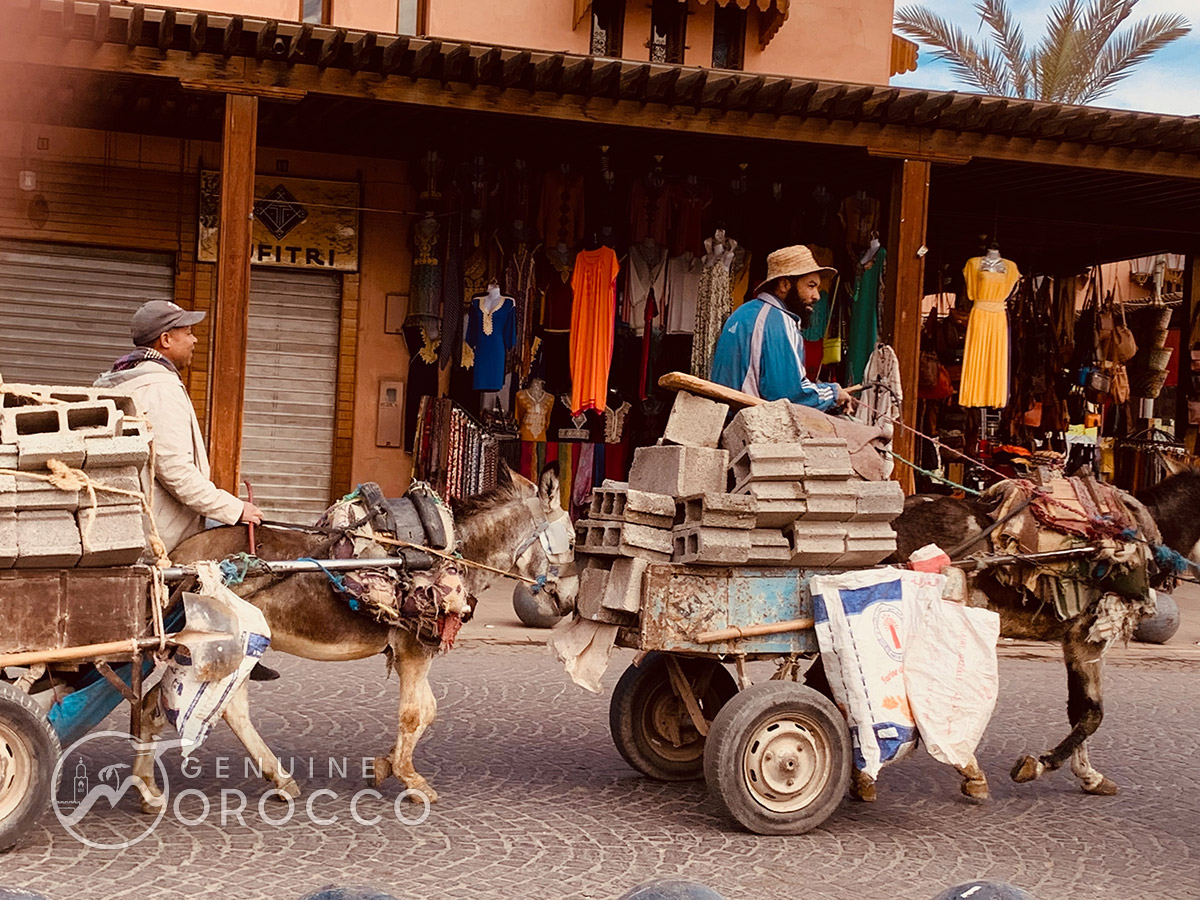
Day 15
An exciting day awaits us as Marrakech, heady sights and sounds will dazzle, frazzle and enchant. Our morning city tour will include: Bahia Palace and the Dar Si Said. Both are a riot of tile work and intricate floral painted-wood ceilings. Then, learn about the Berber culture, and follow their steps along the trade routes from North Africa to the Sahel at the Tiskiwin Museum. Also called Bert Flint’s Museum for the Dutch anthropologist who founded it and who’s personal collection of artifacts it houses, its displays range from authentic Berber tents and carpets to fine basketwork and ancient jewelry. Continue to Dar El Bacha, considered one of the most beautiful palaces in the ochre city. Visitors can discover the ceiling with multicolored mosaics and Berber style architecture. A cedar wood door is engraved with a symbolic star from Morocco. Head to dar bellarj for a lunch on your own expense. Relax and get ready for a traditional hammam. Entering your local hammam you enter a place where space and time speak an ancient language. You will be immersed in total relaxation listening to your own body in reconciliation with yourself in an atmosphere filled with water, oils, essences and perfumes. Enjoy 45 minutes of scrub with black soap or spices for relaxation and eliminating toxins from the body. After Hammam, sway to the massage place where you will enjoy a tonic massage of the Moroccan tradition that help to eliminate tensions in order to regain energy and vitality. Head to el Fassia restaurant for a dinner (à la carte) on your own. After, on to the Jamaa L’Fna square and witness the astonishing spectacle of Jamaa L’ Fna Square by evening. Visited by locals and tourists, you will find juice stalls, water sellers and snake charmers by day and dancing boys, storytellers and magicians by night. Overnight at the hotel.
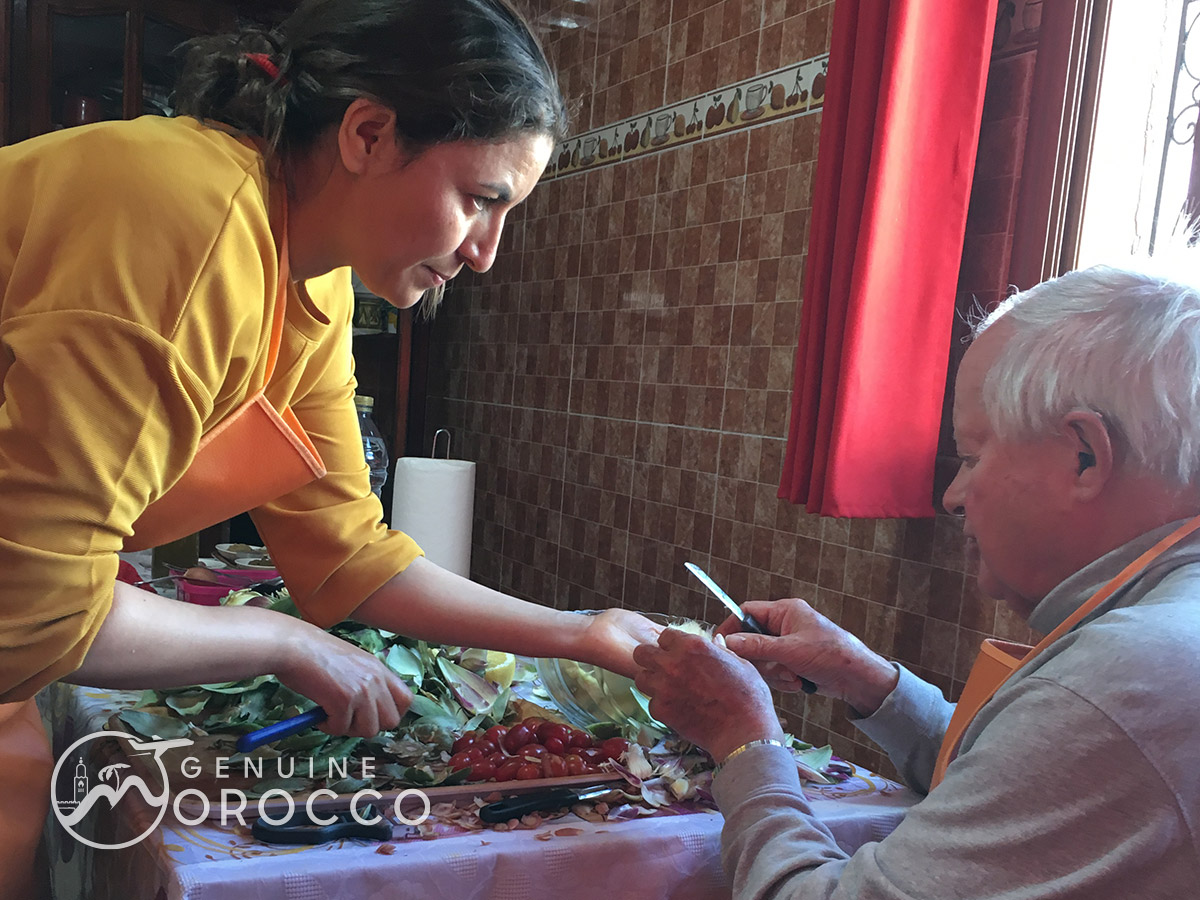
Day 16
Today, you will visit the most beautiful palaces and monuments in Marrakech including Badiaa Palace: Built in the late 19th century. Our visit will include the Koutoubia mosque. Then off to the beautiful Jardin Majorelle. Yves Saint Laurent gifted the Jardin Majorelle to Marrakech, the city that adopted him, in 1966. Saint Laurent and his partner Pierre Berge bought the electric-blue villa and its garden to preserve the vision of its original owner, landscape painter Jacques Majorelle, and keep it open to the public. The garden began cultivating in 1924 and thanks to Marrakshi ethnobotanist Abderrazak, the psychedelic desert mirage of 300 plant species from five continents continues to be preserved. The garden is also home to the Berber Museum, which houses a small but spectacular collection of authentic Moroccan garments, weapons and jewelry, dating to the 19th century and before. The craftsmanship and artistry, particularly of the women’s dresses, had surely not been lost on Yves Saint Laurent, who arranged to have his ashes scattered in the garden, where a small monument marks his passing. After lunch at a local restaurant in the medina, you begin your stroll through the labyrinth of narrow streets in the Medina and visit the famous Souks, selling everything from leather clothing to spices.
At 3:30 PM, we will have an exceptional gastronomic experience of a cooking class with a Moroccan family, you will star the experience by visiting the souk and choose you own fresh vegetable to cook your tajine or salad or any Moroccan dish you like. After the souk you will head to the house of the family to star the cooking. At the end of the day enjoy your dinner in a Moroccan way with the local family in Marrakech before you arrive to your riad for overnight.

Day 17
This morning you will be met at your hotel and transferred to Essaouira. On the way, you will stop at an Argan oil cooperative where you will enjoy the experience of the different traditional processes of oil making with the local ladies. First of all, the women sit armed with a base rock and a hand-held sharp stone to start the extraction process. They crack each Argan fruit to reach the kernels. The women roast the kernels slightly to bring out the flavor, then let them aside to cool down before they ground them into a very thick brown oily liquid using a traditional rock grinder (Azerg). Soon after that, one of the women in the cooperative would mix the oily paste with warm water before hand- kneading in order to bring the pure, unfiltered Argan oil up to the surface to finally be able to filter it. The brown dough-like hunk (local term: Tazegmount), left after the extraction procedure, is protein-rich and usually used for effective traditional cosmetic recipes as well as for animal feed. You will learn all these methods starting from harvesting the good quality fruits to the extraction and making Argan oil products. Enjoy a Berber lunch at the cooperative then continue your way to Essaouira where you will enjoy rest of the day at leisure. Overnight at the hotel.

Day 18
Breakfast at the hotel. Essaouira, a relatively small, easily navigable beach city, is ideal for a free day. Essaouira has got a distinct multicultural feel, resulting from the large Portuguese, French, and Jewish populations that once called it home. Its mild climate and expansive stretches of ocean sand also place it among Morocco’s top beach towns. Essaouira’s walled medina was added to UNESCO’s World Heritage list in 2001. Its well-preserved, late-18th-century fortified layout is a prime example of European military architecture in North Africa. For the visitor, the mellow atmosphere, narrow winding streets lined with colorful shops, whitewashed houses and heavy old wooden doors make it a wonderful place to stroll. Overnight at the hotel.

Day 19
After breakfast, transfer to Casablanca via Safi, Oualidia and el Jadida. Safi was under protectorate by the Portuguese empire from 1488 to 1541, while the fortress built to protect the city, under Portuguese rule, is still there today. Safi is the main fishing port for the country’s sardine industry, and also exports phosphates, textiles and ceramics. During the Second World War, Safi was one of the landing sites for operation Torch. After Safi, stop at Oualidia for lunch on your own before continuing through el Jadida to Casablanca. Check in to the hotel and get ready for your farewell dinner at Rick’s Café. After the dinner, drive back to the hotel and overnight.

Day 20
Wander at leisure.

Day 21
Today, we will assist you to Casablanca airport for your flight.
Genuine Morocco provides guests with a complete and authentic cultural experience, including classic monuments, exploring contemporary culture, engaging with art and artisans, tasting unique cuisine, and discovering amazing Morocco cities.
The payment is encrypted and transmitted securely with an SSL protocol.